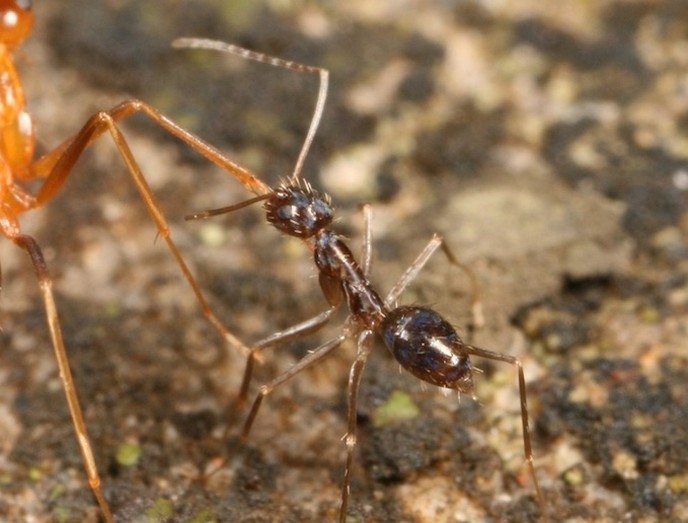Examining the effects of ant reproduction on genome evolution
Ants are haplo-diploid(opens in new window). Males develop from unfertilised eggs while worker females and queens develop through fertilised eggs. But some species of ant follow a system of ‘double-clonal reproduction’. All workers in these ant colonies are hybrids, but reproductive ants are not: new reproductive queens are clones of their mother and reproductive males are clones of their father. This means the queen and male genomes evolve separately, only interbreeding to produce workers – which are sterile. The EU-funded MELCA project delved deep into this rare system, to elicit further details such as its prevalence, and when it evolved, and to investigate its consequences for genome evolution. Their subject was the longhorn crazy ant, Paratrechina longicornis, a common pest and one of the most broadly dispersed ants in the world. “Our work reveals further details on how the double-clonal reproductive system operates in this species. This lays the foundation for understanding the interplay between molecular evolution of the genome and mode of sexual reproduction,” says Hugo Darras(opens in new window), from the Department of Ecology and Evolution at the University of Lausanne and lead researcher on the MELCA project. There were two surprising discoveries from the research, which was undertaken with the support of the Marie Skłodowska-Curie Actions programme. “Our results suggest that genetic exchange between queens and males is not occurring anymore in Paratrechina longicornis. Queen and male genes unify in non-reproductive workers only. We estimated that the two clonal sexes have been separated for more than 1 million years.”
Eggs and genomes
“The production of sterile workers through sexual reproduction is a common feature of ants. What is unusual in this species is that queens are produced through a different mode of reproduction than workers. They therefore carry a different genetic makeup,” Darras explains. In most ant species, diploid (fertilised) eggs can develop into either queen or worker females depending on environmental factors. In Paratrechina longicornis, the fate of a diploid egg appears to be determined by its genotype. Unfertilised eggs contain only maternal genetic material and will develop into queens. By contrast, eggs produced by sexual reproduction carry both queen and male genomes and will develop into workers. “The genetic mechanism responsible for this strong association between female caste and genotype is still unknown,” Darras says.
Queen’s choice
This double-clonal reproductive system gives Paratrechina longicornis queens the ability to use both asexual and sexual reproduction for the production of queens and sterile workers. “The use of asexual reproduction allows queens to maximise the transmission rate of their genes to their reproductive daughters. At the same time, sex maintains genetic diversity within the worker force which is expected to enhance colony performance,” Darras explains. Cross-breeding between divergent queen and male lineages produces workers displaying high heterozygosity(opens in new window) levels. This means they have two alleles(opens in new window), which prevents any inbreeding from taking place, even in small populations. “This lack of inbreeding may be one of the main factors explaining why Paratrechina longicornis has become one of the most widespread ants in the world,” says Darras. The team’s results suggest that the genomes of queens and males of Paratrechina longicornis no longer recombine, meaning the genomes are evolving as separate entities. “We are going to take advantage of this unusual system to study how selection shapes the evolution of genes involved in sex differences,” Darras adds.







